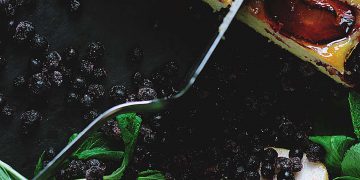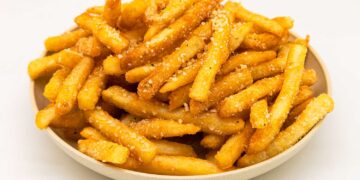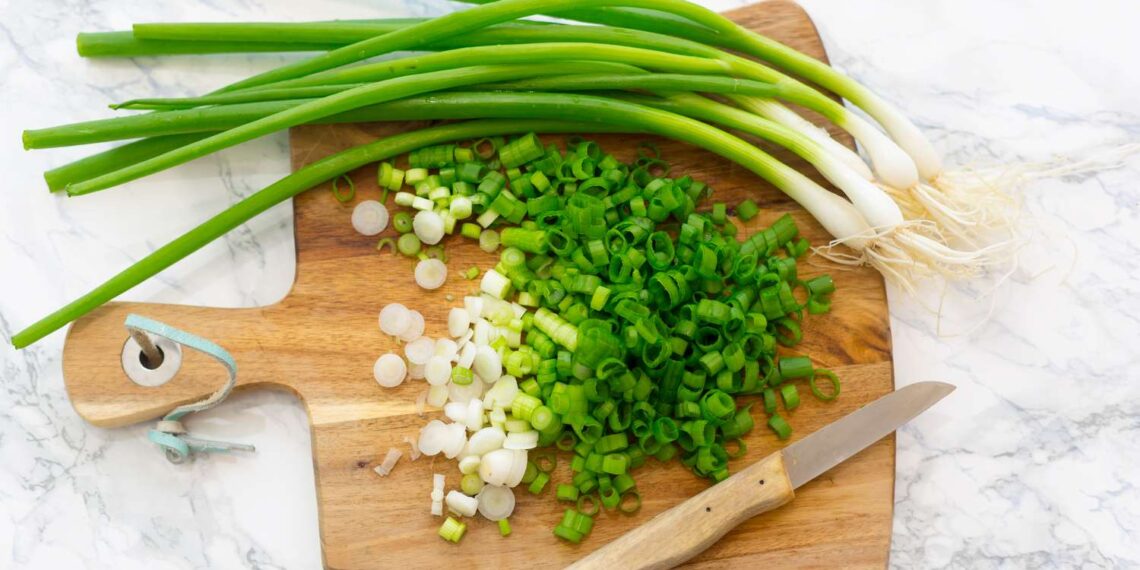
Green onions are one of my favorite spring veggies. They add a rich depth of flavor to recipes in both cooked and raw forms. I add them to salads, soups, fried rice, savory pancakes, ramen, casseroles, and dips for the perfect pop of mild onion flavor.
Green onions can sometimes be hard to clean since their thin layers accumulate dirt as the plant pushes through the soil. Also, as a veggie that isn’t peeled, I was curious about the pesticide content of conventionally grown green onions.
For all the nitty gritty details, I spoke with two food safety experts to learn how to best wash green onions to remove dirt and pesticides.
Dirt and Pesticides On Green Onions
The amount of dirt on green onions depends on where they’re sourced. Scallions from the grocery store tend to be pretty clean as they’re often rinsed prior to hitting the shelves. Meanwhile, spring onions directly from farmers or farmers’ markets can sport quite a bit of dirt.
The amount of pesticide residue on any piece of produce, green onions included, is tricky to determine as it can’t be gauged with the naked eye. This is where resources like the Dirty Dozen list come in handy.
“The ‘Dirty Dozen’ is an annual list from the Environmental Working Group (EWG) that identifies the fruits and vegetables with the highest levels of pesticide residues. Its goal is to help consumers decide when it might be beneficial to choose organic over conventionally grown produce,” says Abbey Thiel, PhD, food scientist, consultant, and educator.
“Data from 46 fruits and vegetables were used to create the list, and green onions were not included [this year],” adds Sarah Alsing, MS, RD, registered dietitian, food safety expert, and recipe creator for Delightfully Fueled.
That said, green onions are missing the inedible outer layer that can protect them from pesticides, as seen with many of the Clean Fifteen options—produce with the lowest levels of pesticide residues. Because of this, it’s reasonable to assume that conventionally-grown spring onions may have higher levels of pesticide residue than peelable veggies.
This fact shouldn’t deter you from buying them. “Critics argue that the Dirty Dozen tends to overstate the risks of pesticides by not considering safety limits set by agencies like the Environmental Protection Agency (EPA) and may also discourage some people from eating fruits and veggies, even though the health benefits far outweigh any potential pesticide risks,” says Thiel. “Washing your produce thoroughly is very effective,” she adds.
Simply Recipes / Getty Images
How To Wash Green Onions
Washing green onions for dirt removal is pretty straightforward. “Hold the onions under cold running water and use your fingers to rub off dirt around the bulb,” instructs Alsing. Trimming the tops and ends of the green onions beforehand can streamline this process, too. “And if you want to be extra thorough, use a soft vegetable brush to scrub stubborn spots,” Thiel adds.
For pesticide removal, a few at-home solutions prove to be effective. “Soaking green onions in a baking soda bath has been found to effectively remove pesticides. However, the Food and Drug Administration (FDA) and Centers for Disease Control (CDC) state that washing produce thoroughly under running water is sufficient,” shares Alsing.
Whipping up a baking soda solution is easy: add one teaspoon of baking soda for every two cups of water to a large bowl and soak the green onions for 12 to 15 minutes, according to Arm & Hammer. “Or you can soak them in a mixture of one part vinegar to three parts water for the same amount of time,” Thiel adds.
When shopping for green onions, look for firm, crisp stalks and bulbs with no signs of yellowing or wilting. Once they’re home, wrap your green onions in a paper towel and store in an airtight container for maximum shelf life. “Wait to wash green onions until you are ready to use them to prevent them from going bad prematurely,” Alsing advises.
#Wash #Green #Onions #Remove #Dirt #Pesticides #Experts
























